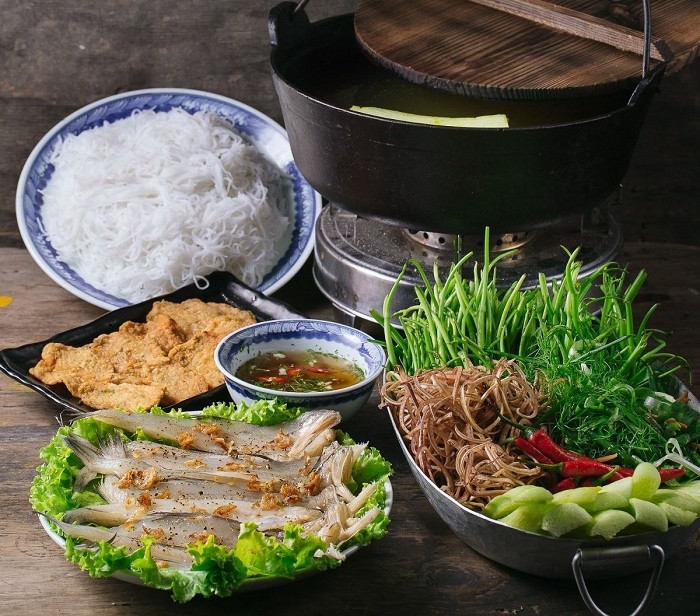CNN: Vietnamese Pho Is Listed Among Top 20’s Best Soups
CNN has included pho bo (Vietnamese beef noodle soup) in its list of 20 best soups in the world along with China’s Lanzhou equivalent and Thailand’s Tom yum goong.
"Broth is simmered for hours with cinnamon, star anise and other warm spices to create a wonderfully aromatic base for this rice noodle soup," American news channel CNN said of pho.
CNN said by 1930, the soup was served with slices of raw beef cooked gently in the broth and today pho bo remains the most beloved version in Vietnam, with options that include the original raw beef, a mix of raw and cooked beef, brisket and tendon.
Pho is made and served across the country though it originated in Hanoi and was taken to the south, where people added their own touches. The noodle soup has been getting rave reviews from global travel magazines for decades.
A bowl of pho bo in Ho Chi Minh City and Hanoi cost from VND30,000 to 50,000 ($1.32-2.20).
In HCMC, tourists can try a bowl of pho at famous restaurants like Hoa, Phu Vuong or Le while Bat Dan, Thin, Ly Quoc Su are the most popular addresses in Hanoi for original flavors.
The story of Vietnamese Pho
 |
| Photo: RecipeTin Eats |
To the casual visitor, the province of Nam Dinh flies under the radar. Situated in the Red River Delta, Nam Dinh is known for agricultural areas and beautiful churches. Tran Hung Dao, the 13th-century national hero who helped defeat invading Mongol hordes, came from these parts. But Nam Dinh’s most significant contribution to Vietnam is the beef noodle soup, Pho Bo.
Legends and myths mean that many histories in Vietnam are coloured a variety of shades. This is also the case with Pho, the country’s most famous dish, and its most successful culinary export. In the capital city of Hanoi, Pho is a staple breakfast dish.
Pho originated in the early 20th century in northern Vietnam, and was popularized throughout the world by refugees after the Vietnam War. Because pho's origins are poorly documented, there is disagreement over the cultural influences that led to its development in Vietnam, as well as the etymology of the name. The Hanoi (northern) and Saigon (southern) styles of Pho differ by noodle width, sweetness of broth, and choice of herbs.
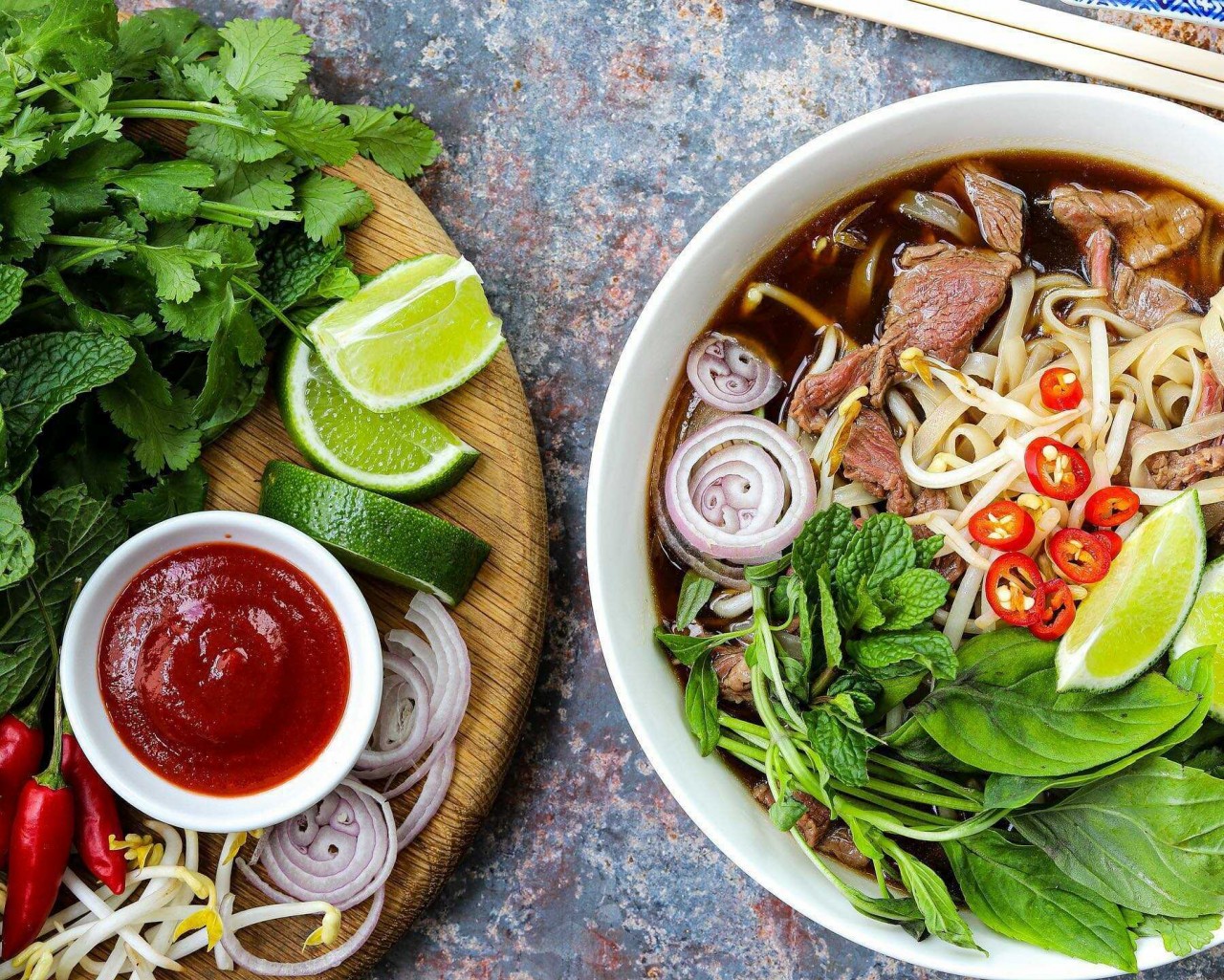 |
| Photo: Skinnymixers |
Pho likely evolved from similar noodle dishes. For example, villagers in Van Cu say they ate pho long before the French colonial period. The modern form emerged between 1900 and 1907 in northern Vietnam, southeast of Hanoi in Nam Dinh Province, then a substantial textile market. The traditional home of pho is reputed to be the villages of Van Cu and Dao Cu (or Giao Cu) in Dong Xuan commune, Nam Truc District, Nam Dinh Province.
Cultural historian and researcher Trinh Quang Dung believes that the popularization and origins of modern Pho stemmed from the intersection of several historical and cultural factors in the early 20th century. These include improved availability of beef due to French demand, which in turn produced beef bones that were purchased by Chinese workers to make into a dish similar to Pho called “Nguu Nhuc Phan”.The demand for this dish was initially the greatest with workers from the provinces of Yunnan and Guangdong, who had an affinity for the dish due to its similarities to that of their homeland, which eventually popularized and familiarized this dish with the general population.
Migrant workers from the Chinese provinces of Yunnan and Guangdong loved the new take, due to its similarity to dishes from back home. The Vietnamese, having developed a taste for beef, grew equally enamoured. By the 1930s, Ganh Pho — roaming vendors shouldering mobile kitchens on bamboo poles — had become a common sight in the streets of the Old Quarter.
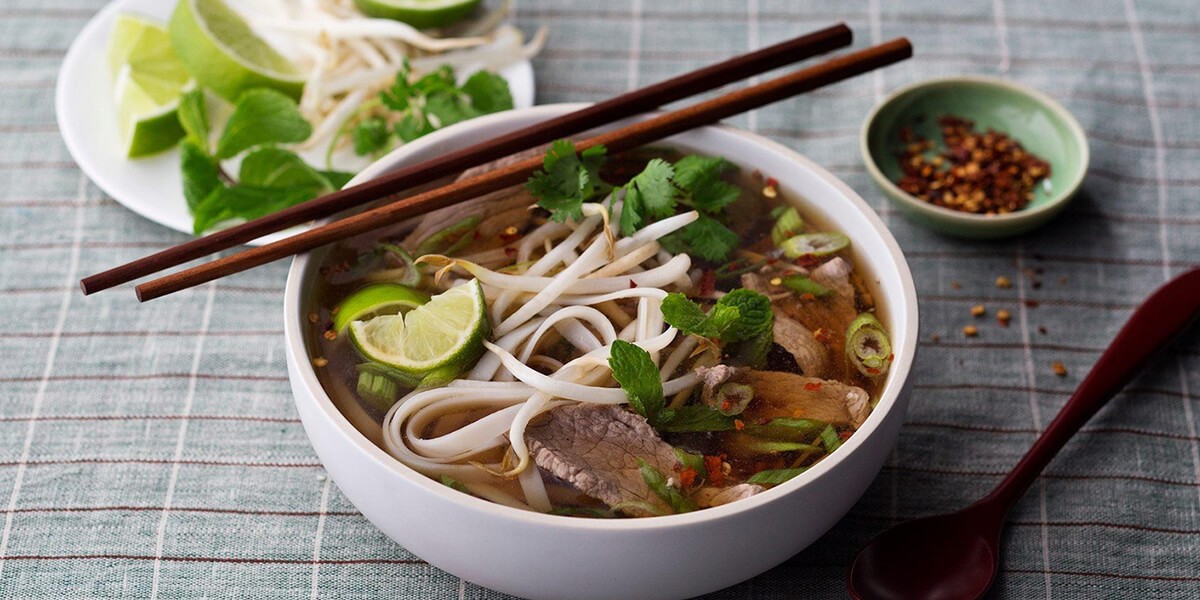 |
| Photo: Traveling to Vietnam |
Since then, Pho has been entwined with the national psyche. In his poem “An Ode to Pho,” poet Tu Mo celebrated the subtle flavour of the soup and its egalitarianism: it is a dish loved by both rich and poor.
Like Vietnam itself, Pho has undergone impactful changes. Privation during hard times resulted in meagre bowls of soup hitting the streets. The most divisive shake up occurred when Pho moved south along with millions of northerners following the partition of the country in 1954.
Unshackled in this southern land of plenty, chefs started sweetening their broth and accessorising with an array of herbs as well as additions such as hoisin and chili sauce. The “broth-off” continues to this day. The main difference is the extra fixings of the southern version. Pho purists swear by the simpler Hanoi Pho, however both versions are delicious.
While debate rages as to the location of Vietnam’s best pho, it could be argued that the dish hasn’t actually evolved all that radically since the early years. Different cuts of meat have been brought to the table and diners can choose from a range of beef cuts including rare beef, flank, brisket, tripe, tendon and meatballs. The invention of chicken Pho in 1939 caused ructions for a while. But, by and large, pho has stayed true to its original tenets.
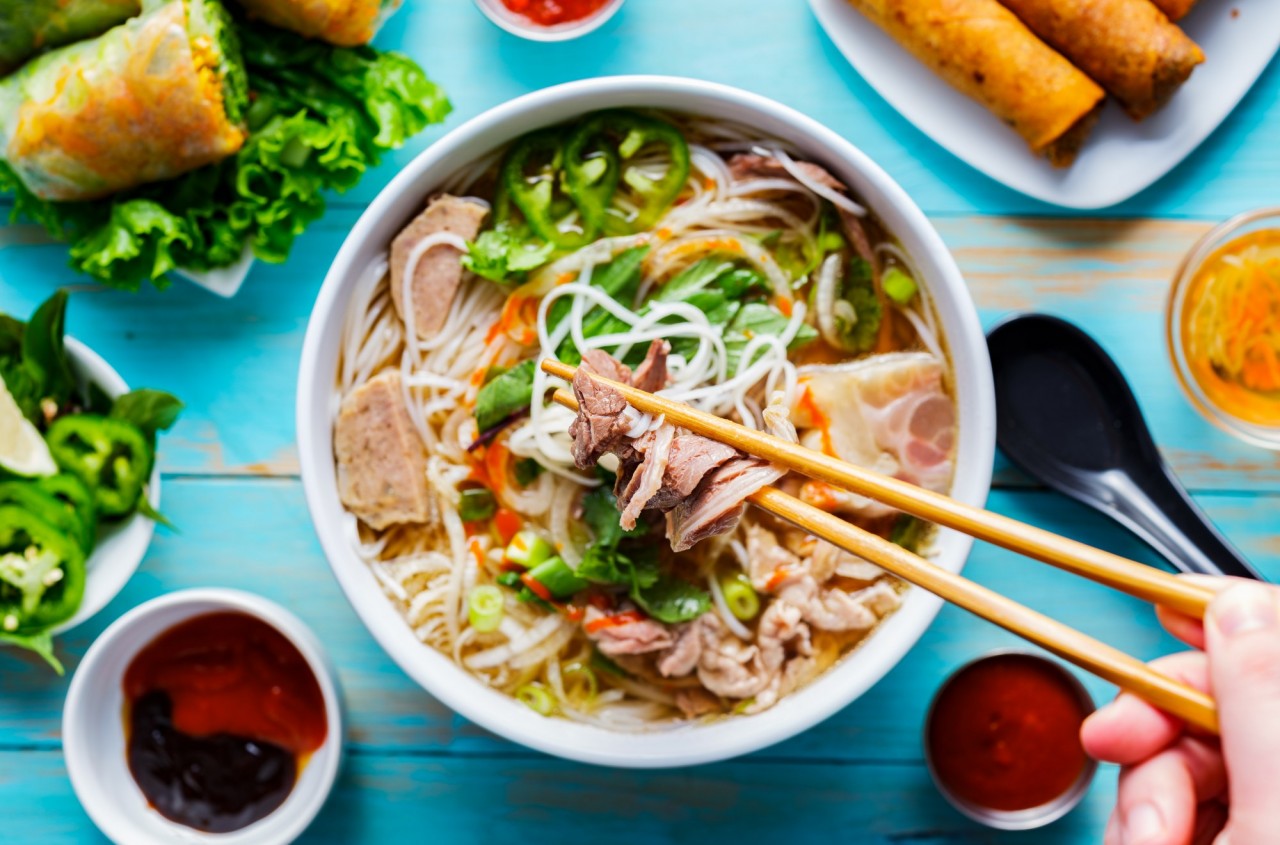 |
| Photo: Shutterstock |
Some of other best soups, according to CNN
1. Borscht
Borscht is a sour soup common in Eastern Europe and Northern Asia. In English, the word "borscht" is most often associated with the soup's variant of Ukrainian origin, made with beetroots as one of the main ingredients, which give the dish its distinctive red color. The same name, however, is also used for a wide selection of sour-tasting soups without beetroots, such as sorrel-based green borscht, rye-based white borscht, and cabbage borscht.
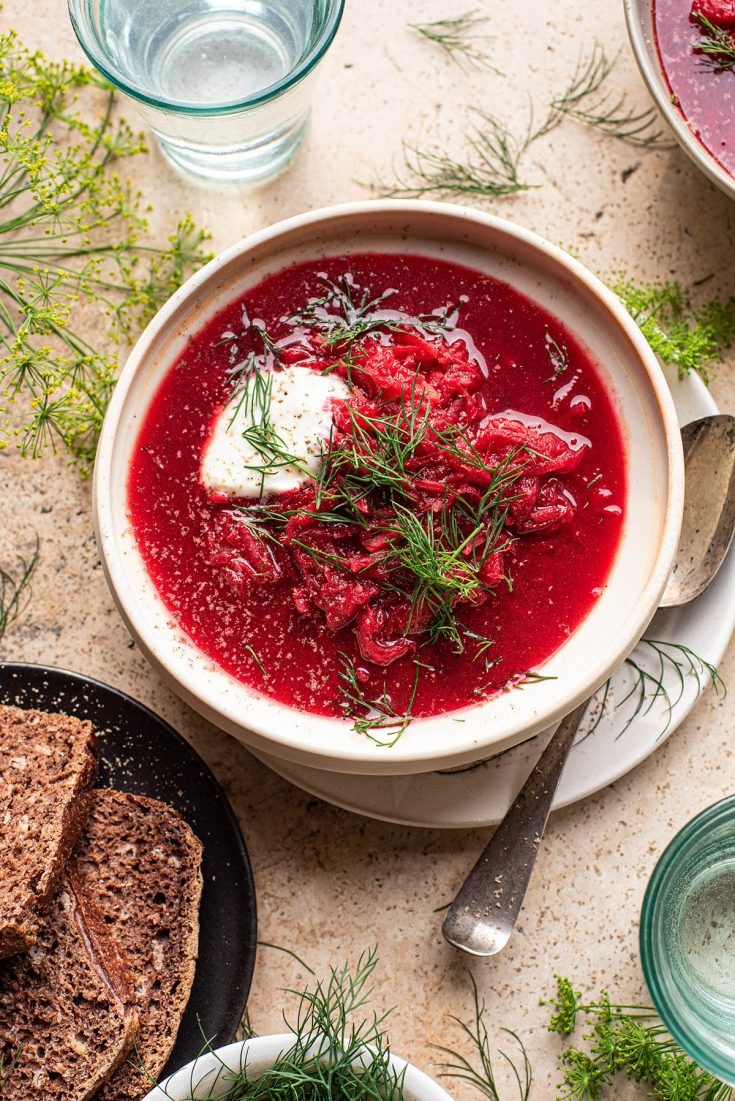 |
| Photo: Occasionally Eggs |
Borscht derives from an ancient soup originally cooked from pickled stems, leaves and umbels of common hogweed (Heracleum sphondylium), a herbaceous plant growing in damp meadows, which lent the dish its Slavic name. With time, it evolved into a diverse array of tart soups, among which the Ukrainian beet-based red borscht has become the most popular. It is typically made by combining meat or bone stock with sautéed vegetables, which – as well as beetroots – usually include cabbage, carrots, onions, potatoes, and tomatoes. Depending on the recipe, borscht may include meat or fish, or be purely vegetarian; it may be served either hot or cold, and it may range from a hearty one-pot meal to a clear broth or a smooth drink. It is often served with smetana or sour cream, hard-boiled eggs or potatoes, but there exists an ample choice of more involved garnishes and side dishes, such as uszka or pampushky, that can be served with the soup.
Its popularity has spread throughout Eastern Europe and the former Russian Empire, and – by way of migration – to other continents. In North America, borscht is often linked with either Jews or Mennonites, the groups who first brought it there from Europe. Several ethnic groups claim borscht, in its various local guises, as their own national dish consumed as part of ritual meals within Eastern Orthodox, Greek Catholic, Roman Catholic, and Jewish religious traditions.
2. Bouillabaisse
Bouillabaisse is a traditional Provençal fish stew originating in the port city of Marseille. The French and English form bouillabaisse comes from the Provençal Occitan word bolhabaissa, a compound that consists of the two verbs bolhir (to boil) and abaissar (to reduce heat, i.e., simmer).
Bouillabaisse was originally a stew made by Marseille fishermen, using the bony rockfish which they were unable to sell to restaurants or markets. There are at least three kinds of fish in a traditional bouillabaisse, typically red rascasse (Scorpaena scrofa); sea robin; and European conger. It can also include gilt-head bream, turbot, monkfish, mullet, or European hake. It usually also includes shellfish and other seafood such as sea urchins, mussels, velvet crabs, spider crab or octopus. More expensive versions may add langoustine (Norway lobster), though this was not part of the traditional dish made by Marseille fishermen. Vegetables such as leeks, onions, tomatoes, celery, and potatoes are simmered together with the broth and served with the fish. The broth is traditionally served with a rouille, a mayonnaise made of olive oil, garlic, saffron, and cayenne pepper on grilled slices of bread.
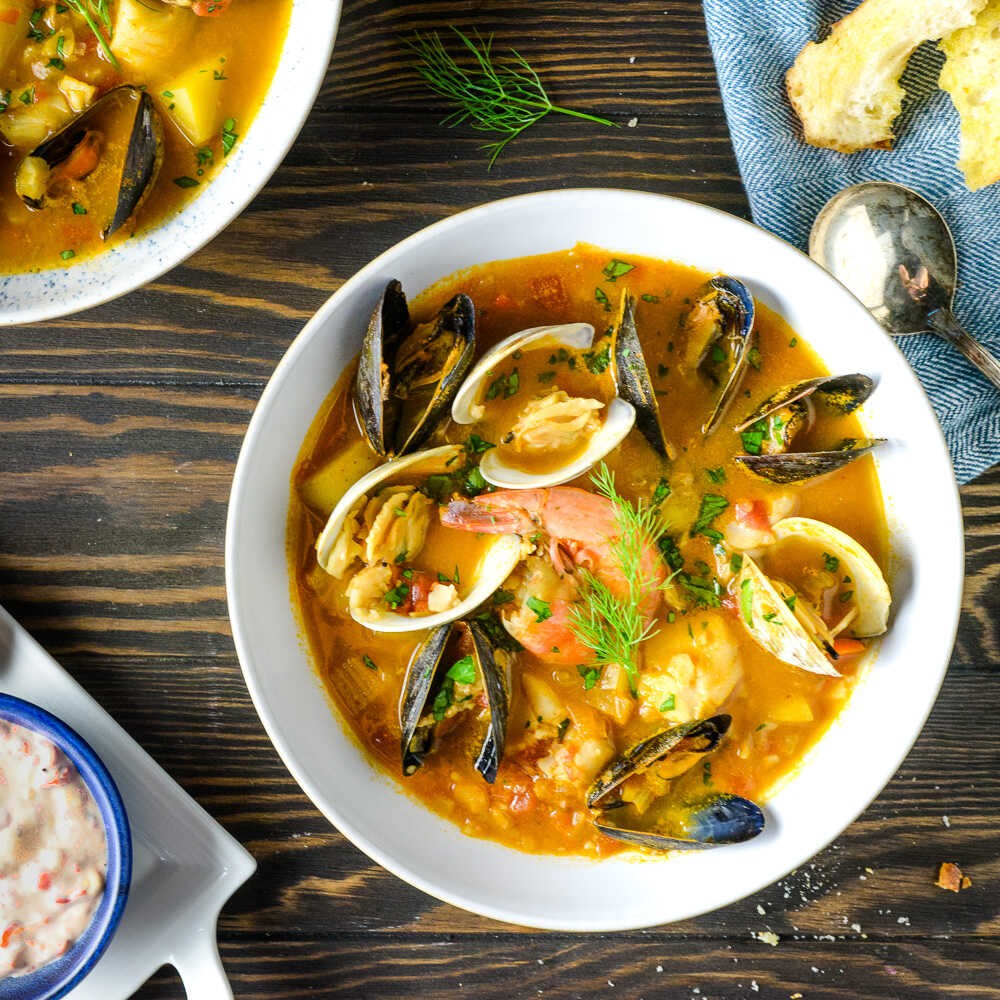 |
| Photo: Homemaker's Habitat |
What makes a bouillabaisse different from other fish soups is the selection of Provençal herbs and spices in the broth; the use of bony local Mediterranean fish; the way the fish are added one at a time, and brought to a boil; and the method of serving. In Marseille, the broth is served first in a soup plate with slices of bread and rouille, then the fish is served separately on a large platter (see image at right); or, more simply, as Julia Child suggests, the fish and broth are brought to the table separately and served together in large soup plates.
3. Caldo verde
Caldo verde is a popular soup in Portuguese cuisine. The basic traditional ingredients for caldo verde use collard greens (or alternatively other leafy greens such as kale or mustard greens), potatoes, olive oil, black pepper and salt. Garlic and onion are traditionally added as well. Some recipes add meat, such as ham hock, making it similar to Italo-American wedding soup. The soup is usually accompanied by slices of paio, chouriço or linguiça (boiled separately with that water being discarded, the sausage added last minute to the soup), and with Portuguese broa corn-bread or rye-bread for dipping. In Portugal, caldo verde is typically consumed during Portuguese celebrations, such as weddings, birthdays, and popular celebrations. For example, the St. John festival, in Braga or Porto. It is sometimes consumed before a main course meal or as a late supper. This soup is served in a tigela, a traditional earthenware bowl.
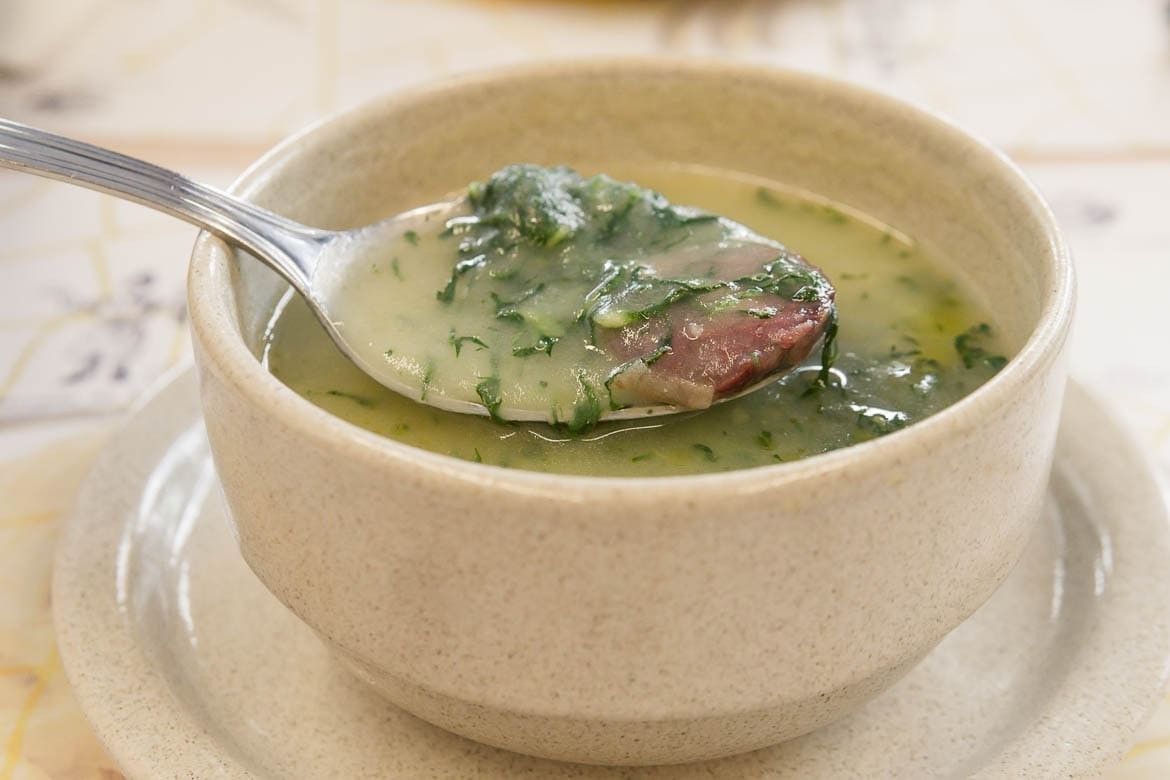 |
| Photo: Your Food Travel Agency |
Caldo verde originated from the Minho Province in northern Portugal. Today, it is a traditional national favourite that has spread across the nation and abroad, especially to places where a large community of Portuguese migrants have settled such as Brazil, Massachusetts, New Jersey, and Rhode Island. References to the soup appear in many novels by Camilo Castelo Branco.
4. Chorba frik
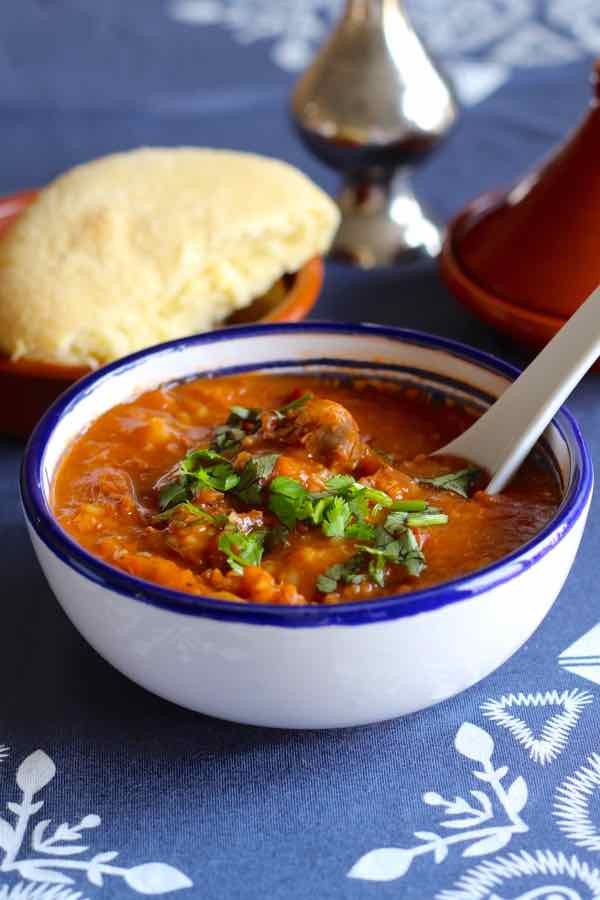 |
| Photo: 196 Flavors |
Durum wheat harvested while green, called freekeh, adds satisfying heft and nourishment to this North African soup, which is especially beloved during the holy time of Ramadan.
The tender grains absorb a tomato broth and aromatic spices, their flavor melding with chickpeas plus stewed chicken, beef, mutton or lamb. Serve with lemon wedges and a hunk of kesra bread.
5. Gazpacho
Gazpacho or Gaspacho, also called Andalusian gazpacho, is a cold soup made of raw, blended vegetables. It originated in the southern regions of the Iberian peninsula and spread into other areas. Gazpacho is widely eaten in Spain and Portugal, particularly during hot summers, since it is refreshing and cool.
Although there are other recipes called gazpacho, such as gazpacho manchego, the standard usage implies tomato soup gazpacho. There are also a number of dishes that are closely related and often considered variants thereof, such as ajoblanco, salmorejo, pipirrana, porra antequerana (closer to a bread soup), and cojondongo.
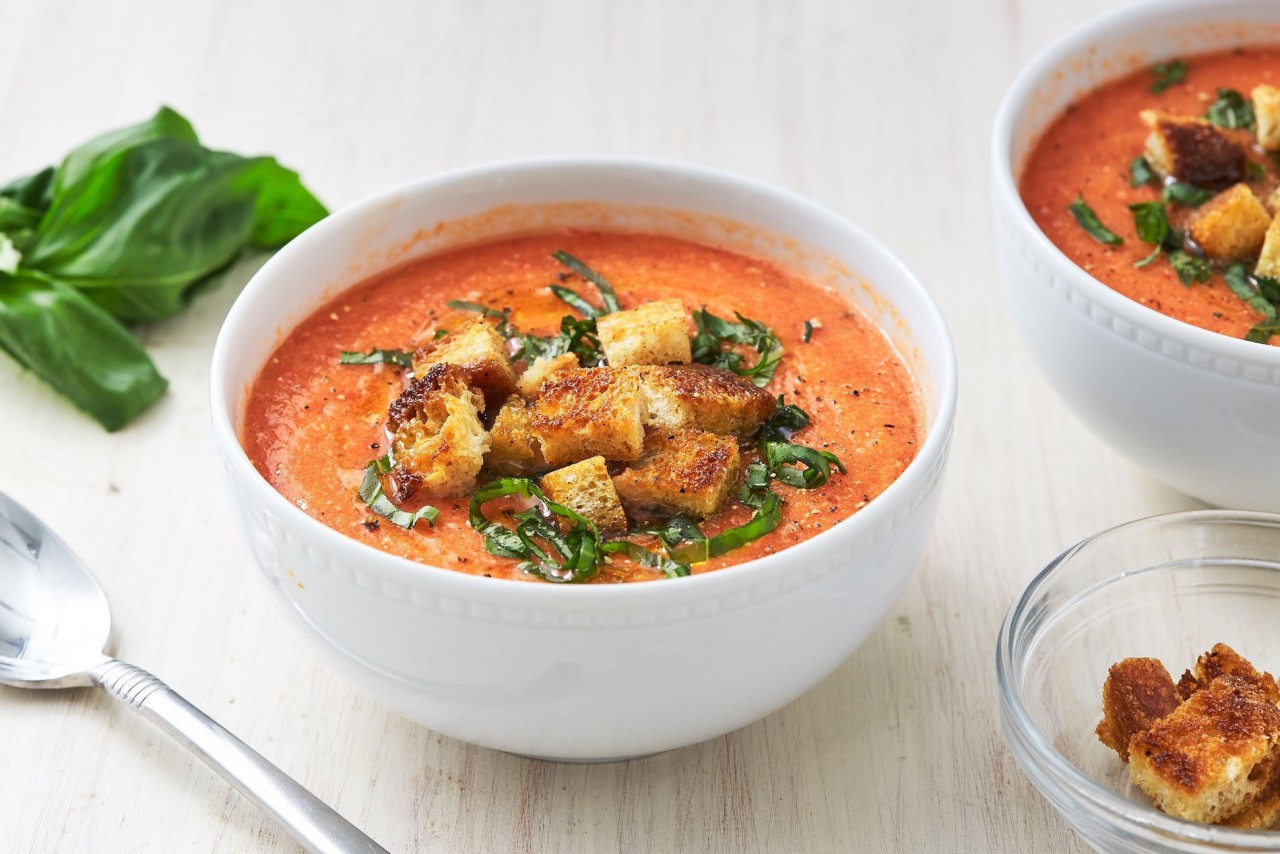 |
| Photo: Delish |
Most gazpacho include stale bread, tomato, cucumbers, onion, bell peppers, garlic, olive oil, wine vinegar, water, and salt.[5] Northern recipes often include cumin and/or pimentón (smoked sweet paprika).
Traditionally, gazpacho was made by pounding the vegetables in a mortar with a pestle; this more laborious method is still sometimes used as it helps keep the gazpacho cool and avoids the foam and completely smooth consistency created by blenders or food processors. A traditional way of preparation is to pound garlic cloves in a mortar, add a little soaked stale bread, then olive oil and salt, to make a paste. Next, very ripe tomatoes and vinegar are added to this paste. In the days before refrigeration the gazpacho was left in an unglazed earthenware pot to cool by evaporation, with the addition of some water.
Gazpacho may be served alone or with garnishes, such as hard-boiled eggs, chopped ham (in the salmorejo variety from Córdoba), chopped almonds, cumin crushed with mint, orange segments, finely chopped green bell peppers, onion, tomato or cucumber. In Extremadura, local ham was added to the gazpacho itself rather than as a garnish, this is called gazpacho extremeño. Andalusian sources say that gazpacho should be slightly chilled, but not iced.
6. Groundnut soup
Peanut soup or groundnut soup is a soup made from peanuts, often with various other ingredients. It is a staple of African cuisine but is also eaten in East Asia (Taiwan), the United States (mainly in Virginia) and other areas around the world. It is also common in various Latin American regions, such as Argentina, Bolivia and Peru, where it can sometimes be served with bone meat and hollow short pasta or fries. In Ghana it is often eaten with fufu or omo tuo. Groundnut soup is also a native soup of the Benin (Edo) people in Nigeria and it is often eaten with pounded yam. Some of the essential ingredients used in making it are Piper guineense (uziza seed) and Vernonia amygdalina (bitter leaf).
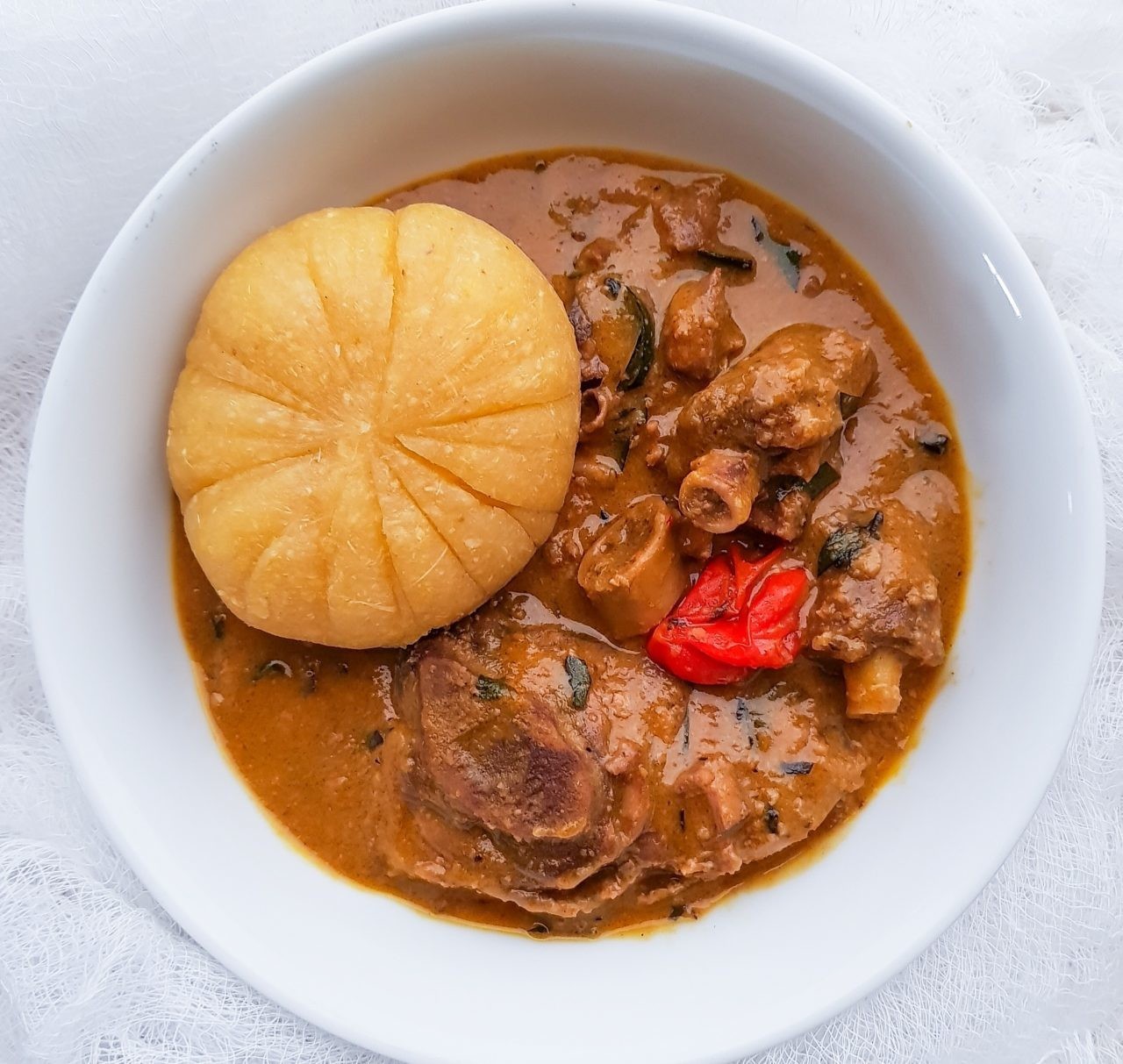 |
| Photo: The Guardian Nigeria |
It is a delicacy that is prepared from groundnut which is mashed into a paste, usually termed as groundnut paste. Groundnut soup is eaten with fufu, banku, kenkey and so on. It is a delicacy that Ghanaian and people in other African countries consume, such as in Sierra Leone. It is popularly known by Ghanaians in an Akan language called Nkatenkwan.
7. Gumbo
Gumbo (Louisiana Creole: Gombo) is a stew popular in the U.S. state of Louisiana, and is the official state cuisine. Gumbo consists primarily of a strongly-flavored stock, meat or shellfish, a thickener, and the Creole "holy trinity" ― celery, bell peppers, and onions. Gumbo is often categorized by the type of thickener used, whether okra or filé powder (dried and ground sassafras leaves).
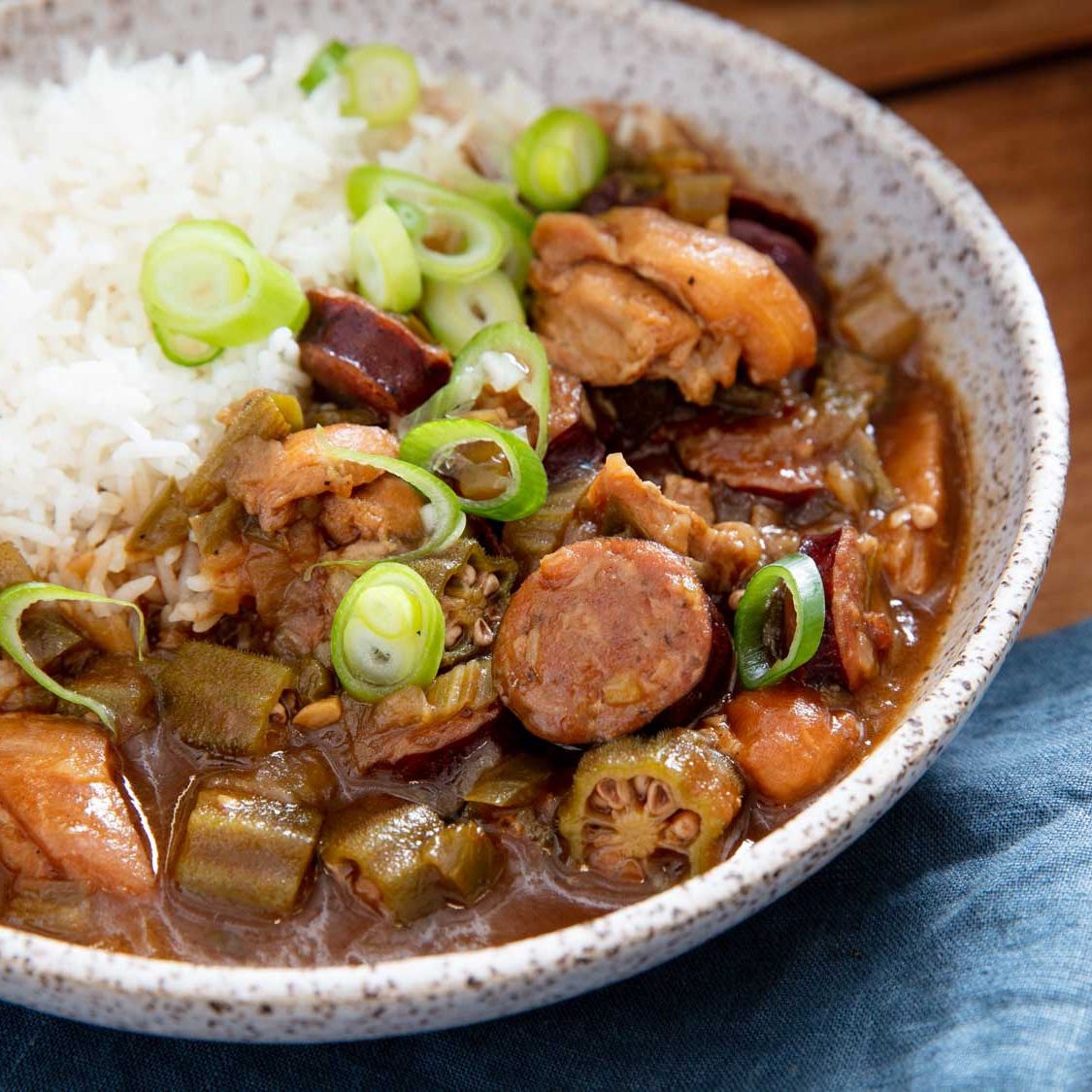 |
| Photo: Serious Eats |
Gumbo can be made with or without okra or filé powder. The preferred method in the historical New Orleans variation is with a French dark roux. The flavor of the dish has its origins in many cultures. Creole gumbo generally contains shellfish, and a dark roux, filé, or both. Tomatoes are traditionally found in Creole gumbo and frequently appear in New Orleans cuisine but there is a "camp" of gumbo cooks who believe that tomatoes should not be used with okra. Cajun gumbo is generally based on a dark roux and is made with shellfish or fowl. Sausage or ham is often added to gumbos of either variety. After the base is prepared, vegetables are cooked down, and then meat is added. The dish simmers for a minimum of three hours, with shellfish and some spices added near the end. If desired, filé powder is added after the pot is removed from heat. Gumbo is traditionally served with rice. A third, lesser-known variety, the meatless gumbo z'herbes, is essentially a gumbo of slow-cooked greens.
The dish combines ingredients and culinary practices of several cultures, including African, French, Spanish, and Native American Choctaw. Gumbo may have been based on traditional native dishes, or may be a derivation of the French dish bouillabaisse, or Choctaw stew, but most likely all of these dishes contributed to the original recipe.
 | CNN Features Made-in-Vietnam Products, Highlights their Sustainability From the EXPO platform, “zero waste” products such as sports shoes made from Vietnamese coffee grounds will quickly become popular and become an indispensable part ... |
 | CNN: The Best and Most Delicious Bread in Asia Bread is one of the familiar food in every Asian family, and in many countries in the world. CNN has make a list of best ... |
 | CNN names Hanoi coffee one of top 10 best coffees worldwide The US-based prestigious news outlet CNN has recently listed Hanoi coffee among the 10 best coffees in the world, together with famous ones of Wellington, ... |
In topics
Recommended
 Handbook
Handbook
Vietnam Moves Up 8 Places In World Happiness Index
 Handbook
Handbook
Travelling Vietnam Through French Artist's Children Book
 Multimedia
Multimedia
Vietnamese Turmeric Fish among Best Asian Dishes: TasteAtlas
 Handbook
Handbook
From Lost to Found: German Tourist Thanks Vietnamese Police for Returning His Bag
Popular article
 Handbook
Handbook
Prediction and Resolution for the Disasters of Humanity
 Handbook
Handbook
16 French Films To Be Shown For Free During Tet Holiday In Vietnam
 Handbook
Handbook
Unique Cultural and Religious Activities to Welcome Year of the Snake
 Handbook
Handbook








